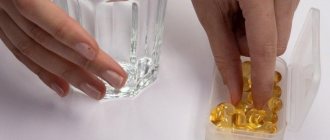December 18, 2021 October 26, 2021
The importance of vitamin D for the body cannot be overestimated. It is responsible for a number of important biochemical processes:
- helps the absorption of calcium and phosphorus, “opening” the cells of bone tissue, teeth and nails to receive these minerals;
- normalizes blood sugar levels;
- speeds up metabolism;
- synthesizes monocytes, which purify the blood;
- stimulates the synthesis of a number of hormones;
- improves the transmission of impulses between neurons;
- affects the development of the embryo.
With proper consumption of vitamin D, bones and muscles are strengthened, blood composition is improved, dry hair and skin disappears, the risk of the appearance and development of oncology and diabetes is reduced, immunity, efficiency, and concentration are increased, the functioning of the thyroid gland and heart is improved, and blood pressure is regulated.
Types of Vitamin D
Vitamin D, or calciferol, is the general name for a group of biologically active substances - fat-soluble vitamins D1, D2, D3, D4, D5, D6. Two of them are beneficial for human health:
- ergocalciferol (vitamin D2) and
- cholecalciferol (vitamin D3).
Ergocalciferol enters the body from the outside - along with plant foods (juices, grains, mushrooms). But cholecalciferol is synthesized by the body itself under the influence of ultraviolet radiation. This is why it is also called a “natural” vitamin. In addition, it is found in foods of animal origin - fatty fish, yolks, butter, etc. According to scientific research, D3 is approximately 30% more active in human life, which means that this particular type of calciferol is especially useful.
Key functions of vitamin D
Vitamin D (calciferol)
– two substances similar in structure and action: vitamin D2 (ergocalciferol) and vitamin D3 (colecalciferol or cholecalciferol).
Under the influence of sunlight, vitamin D3 is synthesized in the skin from provitamins (from food and synthesis from cholesterol). In the body, from these two forms (D2, D3), the active product of their transformation, calcitriol, is formed and used. It is formed in two stages: first in the liver and then in the kidneys.
The history of the discovery of vitamin D is associated with the study of retinol, or vitamin A. At the beginning of the 20th century, it was discovered that fish oil is rich in retinol. As an experiment, fish oil was given to dogs. After some time, scientists noticed that the animals stopped suffering from rickets, which was one of the main problems in pediatrics at that time.
Experts tried to link rickets with vitamin A deficiency, but Elmer McCollum, who discovered retinol, refuted this hypothesis. He conducted his experiments with dogs suffering from rickets: for some time, McCollum gave them fish oil with neutralized retinol. This prompted the scientist to think that the cure comes from some other substance, which is also contained in fish oil. This is how vitamin D was discovered at the beginning of the 20th century.
About a year later, scientists discovered that if food is exposed to ultraviolet light, the amount of vitamin D in it increases. Thus, it was established that the sun is the source of this valuable element.
Main functions of vitamin D
:
- Promotes normal skeletal formation.
- Ensures the exchange of calcium and phosphorus in the body.
- Promotes muscle tone.
- Increases immunity.
- Necessary for the functioning of the thyroid gland and normal blood clotting.
- Helps the body restore the protective membranes surrounding the nerves.
- Participates in the regulation of blood pressure and heartbeat.
- The connection between vitamin D deficiency and autoimmune diseases and cancer is suspected and actively studied.
Vitamin D deficiency
Vitamin D deficiency is a very common problem in Russia. After all, most of our territory is included in the zone of reduced insolation. In addition, vitamin D is synthesized by the body only if the sun's rays hit the skin at a certain angle, which is observed from 11 a.m. to 2 p.m. For children, this time may coincide with lunch or bedtime, while for adults it may be at work. Factors that lower vitamin D levels include constant use of sunscreen during the summer and bad habits such as smoking and excessive alcohol consumption. Studies conducted in different regions of Russia have shown that vitamin D deficiency among Russian children under three years of age is approximately 24%, and its deficiency is 42%. And hypovitaminosis is especially acute in the winter period of the year - from late November to early March. Thus, more than 2/3 of children need additional vitamin D.
Symptoms in adults
Vitamin D deficiency can be detected through clinical and laboratory tests. The following symptoms should be a signal that it’s time to go to the doctor:
- chronic fatigue,
- irritability, nervousness,
- problems with stool
- sleep disorder,
- caries,
- decreased vision,
- bone loss and bone fragility,
- aching pain in bones and joints,
- increased sweating of the occipital region,
- cramps, nagging muscle pain,
- dryness, flaking of the skin,
- alopecia,
- loss of appetite, anorexia,
- overweight,
- frequent respiratory tract infections.
As we can see, the symptoms from this list are not specific. And based on them it can be difficult to make an accurate diagnosis. Therefore, those who suspect they have calciferol vitamin deficiency should be tested for 25-hydroxyvitamin D (25 (OH) D). If your level is in the range of 30-100 ng/ml, there is no need to worry. A reading of less than 20-30 ng/ml indicates vitamin D deficiency, and less than 10 ng/ml is diagnosed as a deficiency, in which case immediate action should be taken. Read more about the importance of vitamin D for women.
Symptoms in children
Calciferol is involved in the development of the embryo and the formation of innate immunity, so children should receive this vitamin even before birth, during the prenatal period. In childhood, when the child's skeleton, teeth and muscular structure are actively developing, adequate levels of vitamin D are very important. Symptoms of a deficiency of this vitamin in children include:
- increased tearfulness, excitability and sleep disturbances;
- growth retardation;
- slowing down the closure of the fontanel;
- weight loss;
- profuse sweating, especially during sleep;
- rickets, changes in the skeletal system (bent legs, enlarged head, flat back of the head, too convex forehead).
Read more about vitamin D for children.
At-risk groups
- Patients with liver, kidney and intestinal diseases. Vitamin D is activated in the liver and kidneys, so in people with diseases of these organs the process is disrupted.
- People with dark skin. A large amount of melanin in dark or tanned skin protects it from UV rays, which reduces the amount of cholecalciferol synthesized.
- Pregnant and lactating women. The developing skeleton of the embryo requires a large amount of calcium and calciferol - it receives them from the mother's body. During lactation, calcium is also washed out of the body, so nursing mothers, as a rule, do not have enough vitamin D and are recommended to take vitamin complexes.
- People over 60 years of age. With age, the absorption of fat in the intestines deteriorates, which affects the absorption of fat-soluble vitamin D.
- Overweight. Being a fat-soluble vitamin, calciferol dissolves in adipose tissue without having time to participate in a number of biochemical processes. Thus, the requirement for vitamin D is higher in obese people.
- Residents of the northern regions are practically deprived of sunshine, so they can replenish their supply of vitamin D only through food, dietary supplements and medications.
- Vegetarians. This is easily explained by the lack of animal foods containing vitamin D in their diet.
Why do people decide that they need to take vitamins?
Nitrogenous organic substances, amines, necessary for life, which are not produced in the body, were once called vitamins. They were studied and it was determined which enzyme in the cell each of them provides. Signs of a deficiency of a particular vitamin in the diet were formulated: if, with a deficiency of a substance, symptoms of a specific disease appear, and after replenishing the amount of the vitamin they disappear, the disease is caused by a deficiency and fortification is a direct treatment. This was the case, for example, with vitamin C, which cures scurvy.
In the mid-twentieth century, the range of vitamins expanded, and at the same time a new concept emerged: even if a minor deficiency does not cause symptoms, a generous supplement of a vitamin to the body can improve well-being and have a beneficial effect on associated ailments. Numerous attempts to treat any disease with horse doses of vitamin C have not taken root in clinical practice. Vitamin A in large doses turned out to be simply toxic to the body.
“D is the only vitamin that has an effect on the immune system, and this has been confirmed in many studies,” says GMS Clinic allergist-immunologist Olga Sidorovich. — It’s the only vitamin I personally take from October to March. The effect of other vitamins in preventing colds, including vitamin C, which is widely used for this purpose, has not been proven.”
Doctors view vitamin D favorably mainly because in northern latitudes the vast majority of the population cannot obtain the amount of vitamin considered normal, either through food or sunlight. In the autumn-winter period, vitamin D deficiency becomes especially acute. A deficiency is considered to be less than 30 ng/ml.
Excess vitamin D
Calciferol hypervitaminosis is a rarer phenomenon in our latitudes. The cause of calciferol oversaturation is often an overindulgence in vitamins. In this case, hypervitaminosis occurs, that is, a condition when the level of hydroxyvitamin D exceeds 100 ng/ml. Calcium salts begin to be deposited in muscles, internal organs, and skin, which negatively affects their condition and function. Hypervitaminosis provokes blurred vision, kidney failure and the appearance of stones. The passion of some young mothers for vitamins can lead to an excess of calciferol in the child’s body. Therefore, treatment and choice of medications for the child should be carried out as prescribed by the pediatrician. It takes into account the appearance of the newborn, as well as the type of feeding on which he is. For example, if you feed your child with milk formulas, then vitamin D is already included in their composition in the required amount, which means there is no need to use drugs to prevent its deficiency. While mother's milk, especially in winter, may contain insufficient amounts of this vitamin.
Among the signs of excess calciferol in children and adults:
- insomnia;
- frequent urination, diarrhea and vomiting;
- skin rashes;
- muscle cramps;
- irritability.
In addition, in children, an excess of vitamin D increases the symptoms of other diseases. Skin rashes or loose stools are sometimes mistaken for an allergy to vitamin D. In fact, it is simply an overdose that disrupts the liver and causes reactions similar to allergic ones.
Criticism
The wave of publications about the healing properties of vitamin D in medical, semi-medical, and completely non-medical publications began about 30 years ago and shows no sign of abating. If you type “vitamin D” next to the name of any disease in an Internet search engine, you will find many articles about positive effects in treatment or the impact of vitamin D deficiency on the course of the disease. Here, for example, is a study showing that a lack of vitamin D can lead to a more severe course of coronavirus infection. But some experts do not agree with the absolute benefits of taking it.
“All statements about the direct effect of vitamin D on immunity, insulin and general well-being have nothing to do with evidence-based medicine,” says Vasily Vlasov, vice-president of the Society of Evidence-Based Medicine Specialists, Doctor of Medical Sciences. — There are no convincing, reproducible studies regarding the healing properties of calciferols in the prevention, much less treatment, of real diseases. Over the past two to three decades, there have been hundreds of articles about the successful use of vitamin D in the treatment of a variety of diseases: from baldness and impotence to strokes and hypertension. All of them have not been verified by subsequent clinical trials. Therefore, when similar articles now appear annually, the attitude towards them is quite skeptical.”
Severe vitamin D deficiency is often observed in a variety of diseases, such as obesity and type 2 diabetes. But doctors look at restoring normal levels differently.
“The importance of vitamin D for the body is just a fashionable topic,” says Alexander Lavrishchev, a therapist at the Semeynaya clinic. Several years ago, vitamin E was fashionable among hepatologists, after a series of publications on this topic. If a doctor wanted to look progressive, he had to try large doses of vitamin E on the patient. 90% of the Russian population lives with vitamin D deficiency. It is easy and inexpensive to synthesize, and if there is a huge market, then there is a big business. As a medicine, vitamin D is unlikely to be effective: I know of no cases in which a patient with an unclear illness would recover only by replenishing the deficiency of this substance.”
Olga Shamrina, who has repeatedly seen exhausted patients with a noticeable vitamin D deficiency, who had previously seen many doctors who had not found any pathologies, does not entirely agree with her colleague.
“If a person has no complaints, this does not mean that there is no vitamin D deficiency,” says the doctor. - You may never notice him. It’s just that sometimes you will be more tired than usual, have difficulty waking up, and sometimes react more forcefully to changing weather. A married couple who had seen many doctors before came to see me by chance. A 45-year-old woman had been unable to get pregnant for more than 3 years and was planning to do IVF. Vitamin D analysis showed that both spouses had a pronounced deficiency. After a short course of treatment with only vitamin D, everything went well. Now the child is already one and a half years old.”
Learn more about NUTRILITE™ Vitamin D
Ultra-violet rays
The easiest and most natural way to increase your vitamin D levels is to spend more time in the sun. The ultraviolet spectrum of sunlight consists of three fractions of rays: UV-A, UV-B and UV-C. The synthesis of cholecalciferol requires B-fraction rays, which do not pass through the glass window. Therefore, it is recommended to catch them only in the fresh air. It should also be remembered that clouds and urban smog can retain up to 50% of ultraviolet radiation. The minimum duration of sunbathing should be 20-30 minutes a day from 11 a.m. to 2 p.m. Unfortunately, it is during these hours in the summer that you are most likely to get a sunburn. And the use of sunscreens with an SPF factor higher than 8 units block the production of vitamin D. Therefore, it is necessary to weigh the dangers and benefits of such tanning. If you can’t be in the sun, you can use a solarium. The rays of UV lamps are not equivalent to those of the sun, but they partially compensate for the deficiency of natural ultraviolet radiation. However, unreasonable use of a solarium can cause premature skin aging, pigmentation and even the appearance of melanoma.
Metabolism of calceferol in the body
For vitamin D to start working in the body, it must go through two stages of activation, which will trigger its mechanism of action:
- In the liver, the substance interacts with enzymes and is converted into calcidiol (25 (OH) D3). It is based on the content of calcitriol in the blood serum that it is determined whether there is enough vitamin D in the body.
- At the second stage, the active form of vitamin D, calcitriol (1.25 (OH)2D3), is formed in the kidneys. It is of a steroid nature.
Calcitriol is responsible for the exchange of phosphate and calcium in the body. In intestinal cells, it stimulates the production of a special protein that transports calcium into the blood. And in the urinary tract it affects the muscles, enhancing the reabsorption of calcium.
The production of vitamin D in the human body is regulated by parathyroid hormone (PTH). The level of PTH is directly related to the amount of calcitriol, phosphorus and calcium: the more of these elements, the less parathyroid hormone and active enzymes are needed to replenish vitamin D.
After completing its work, vitamin D is converted by enzymes into an inactive substance (calcitroic acid metabolite), which is excreted from the body along with bile.
The question of the effect of vitamin D on the human body is still open. Scientists continue to study this substance. Perhaps in the near future new discoveries will be associated with it that can improve human life and health.
What foods contain vitamin D?
List of foods high in vitamin D:
- Fish fat
- Cod liver
- Pink salmon and other fatty fish
- Black caviar
- Egg yolk
- Goat milk
- Butter
- Hard cheeses
The table shows the amount of cholecalciferol contained in 100 grams of products.
| Product (100 g) | Vitamin D content (in mcg) |
| Fish fat | 250-350 |
| Cod liver | 100-200 |
| Pink salmon, salmon, mackerel, chum salmon, herring, trout, eel, halibut | 10-30 |
| Black caviar | 8 |
| Egg yolk | 7,7 |
| Goat milk | 1,3 |
| Butter | 1,5 |
| Hard cheeses | 1 |
dietary supplements
Unfortunately, our lifestyle does not always allow us to track the amount of nutrients in our diet. In this case, you can take a variety of vitamin complexes from Amway, which will help maintain normal daily calciferol balance. NUTRILITE Omega-3 with Vitamin D are jelly lozenges for children that are easy to swallow, dissolve quickly, are well absorbed and do not leave an unpleasant aftertaste. One lozenge covers up to 80% of the daily dose of vitamin D. NUTRILITE children's chewable lozenges contain calcium, magnesium and vitamin D, necessary for rapid growth of the child. One lozenge contains approximately 30% of the daily requirement of calciferol. Calcium, magnesium, vitamin D complex NUTRILITE is a biologically active food supplement for adults. Regular use of this drug keeps bones strong and reduces the risk of fractures. The drug is suitable for older people, as well as those who play sports and want to maintain flexibility and mobility. Each tablet contains a daily dose of calciferol. It is convenient to purchase drugs at a minimal cost through the Amway website. All you need to do is select the products you need and arrange delivery to Moscow or another city in Russia.
Main types of vitamin D
Vitamins of group D (C27H44O3) are biologically active substances. According to their structure they are classified as sterols.
The group includes the following elements:
- D1
Chemical Formula: C56H88O2
Consists of two components: lumisterol and ergocalciferol. It is produced artificially. Does not play a significant role for humans and medicine.
- D 2
(ergocalciferol)
Chemical formula: C28H44O
A person can receive this element only through food. Also found in dietary supplements. Regulates the exchange of calcium and phosphorus in the body.
- D3
(cholecalciferol or colecalciferol)
Chemical formula: C27H44O
Of the entire group, this is the most active substance. Its sources for humans are food (fish, caviar, butter, cheese, chanterelle mushrooms) and sunlight
. Even five minutes of direct sunlight can be enough for the body to produce its daily requirement of vitamin D3.
We recommend
“Vitamins for sleep, against insomnia and obesity” Read more
- D4
(dehydrocholesterol)
Chemical formula: C28H46O
Contained in the skin. Under the influence of ultraviolet rays it turns into D3 in the epidermis.
- D5
(sitocalciferol)
Chemical formula: C29H48O
This is a synthetic analogue of vitamin D3, first produced in Chicago. Virtually non-toxic. Used in the treatment of cancer. It was found in nature in wheat oil.
- D6
(stigmacalciferol)
Chemical formula: C29H46O
The element is still being studied by specialists. It was synthesized from plants.
Signs of Vitamin D Deficiency
At the beginning of the 20th century, many children suffered from rickets. This disease develops due to a lack of vitamin D. In adults, a deficiency of this element causes osteoporosis, intestinal obstruction, and weakened immunity.
Initial symptoms of vitamin D deficiency include weakness, sweating, irritability, decreased performance and appetite, sleep disturbances, dry and burning mouth.
Due to weakened immunity, a person begins to suffer from colds and infectious diseases more often. Impairments in the functioning of the immune system can even lead to the development of autoimmune and oncological pathologies.
With a deficiency of calciferol, a failure occurs in the synthesis of connective tissue, for example, cartilage. This can cause a person to experience pain in the joints and spine. Also, with a lack of vitamin D, collagen production is disrupted, and the skin begins to age faster.
Another problem is that when the body does not have enough calciferol, calcium begins to accumulate in it. Bones become very fragile and break easily, and teeth are destroyed.
Vitamin D is responsible for the conduction of nerve impulses. Its deficiency leads to cuts in the smooth muscles of the intestines and obstruction. Multiple sclerosis, skeletal muscle damage, and blurred vision may also develop.
Lack of calciferol even affects the reproductive system. In women, the process of egg maturation stops, and in men, testosterone production decreases, which can lead to impotence.










